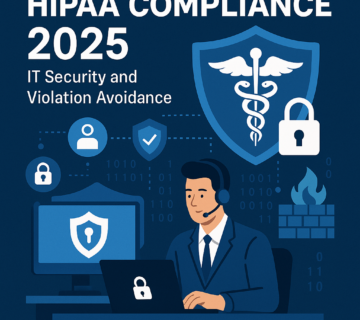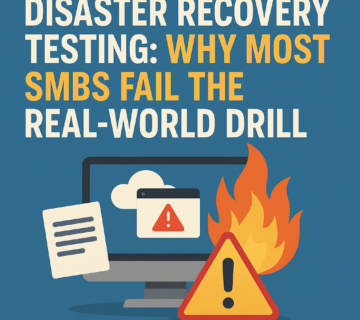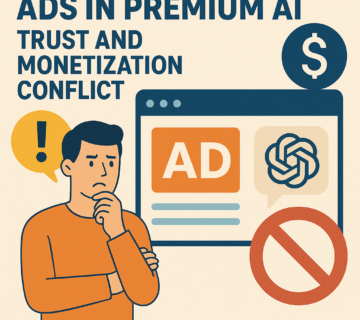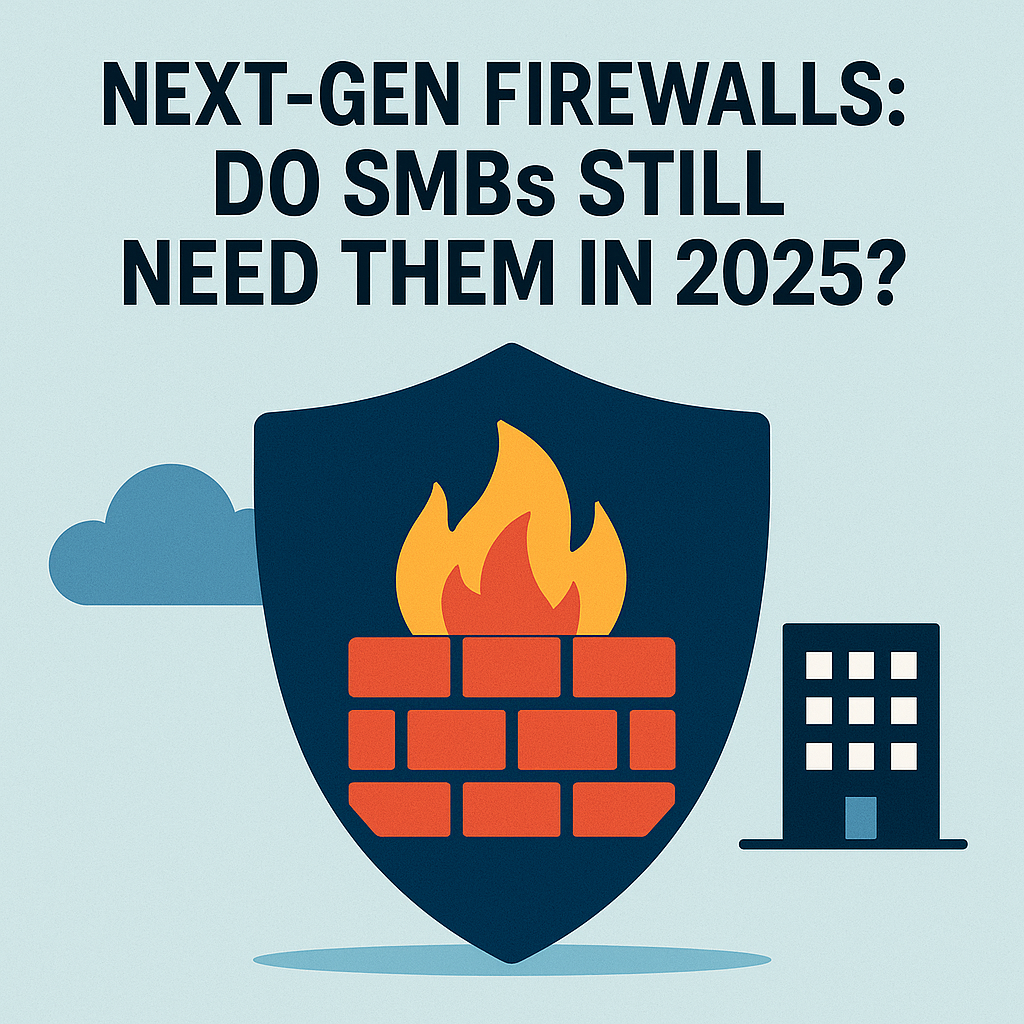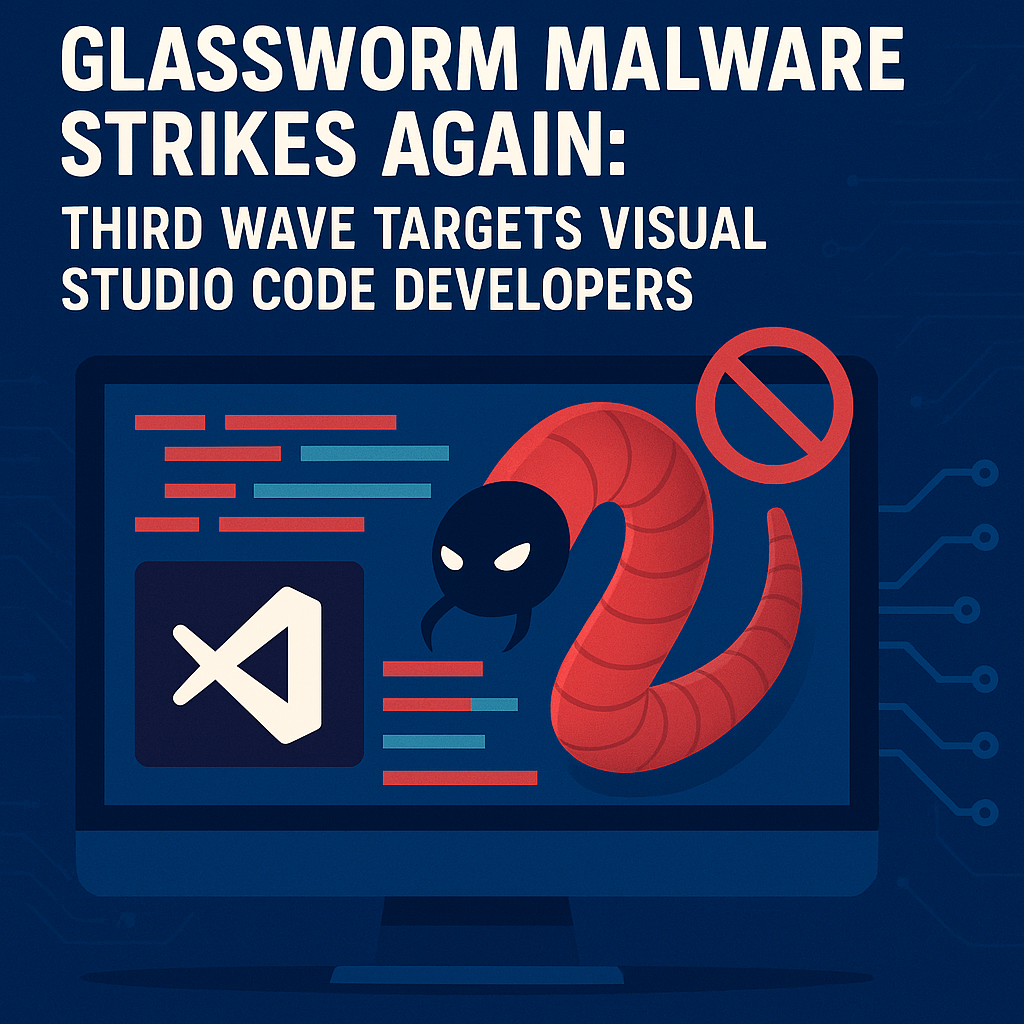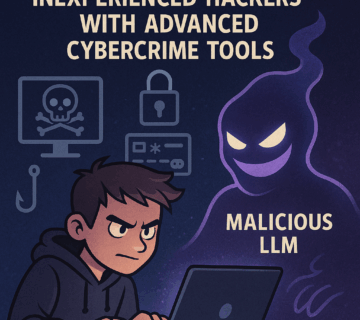10X Actionable Threat Intelligence for Mitigating Emerging Cyber Threats
🎙️ Dive Deeper with Our Podcast! Adidas Cyber Attack Exposes Customer Data: What You Need to Know
👉 Listen to the Episode: https://technijian.com/podcast/actionable-threat-intelligence-2025-ai-google-and-mitigation/
Subscribe: Youtube | Spotify | Amazon
Actionable Threat Intelligence for Mitigating Emerging Cyber Threats
In 2025, the cyber threat landscape has intensified. From ransomware groups deploying triple extortion tactics to AI-driven malware dynamically adjusting its strategy mid-attack, organizations must embrace actionable threat intelligence to stand a fighting chance. Not only is the volume of threat data increasing, but so is its complexity. Transforming this raw data into strategic cyber defense has become mission-critical.
Understanding What Actionable Threat Intelligence Really Means
Actionable threat intelligence goes beyond listing suspicious IPs or malware hashes. It involves contextualizing data—mapping it to threat actor tactics, motivations, and likely targets. This intelligence enables security teams to proactively defend rather than merely respond. It’s the difference between being a hunter and the hunted.
The Difference Between Threat Data and Intelligence
While threat data is simply raw input—like URLs or indicators of compromise (IOCs)—intelligence is refined knowledge that answers the “who,” “what,” “why,” and “how” behind an attack. Intelligence empowers decision-making; data, on its own, does not. Analysts today must know how to connect these dots using behavioral analysis, adversary mapping, and impact forecasting.
How AI Is Transforming Cybersecurity Operations
AI now enables cybersecurity teams to analyze millions of signals across endpoints, networks, cloud environments, and applications. Machine learning models identify patterns human analysts may overlook. These models aren’t just fast—they adapt. New threats like polymorphic malware morph faster than manual analysis can keep pace. AI ensures the response isn’t just reactive—it’s predictive.
Why Google’s Approach to Threat Intelligence Matters
Google has fused its capabilities with Mandiant and VirusTotal to create an ecosystem of intelligence, enabling predictive detection. With 35 million contributors, VirusTotal feeds insights that Google layers with behavioral analytics, making its defense posture one of the most real-time, data-driven systems in the industry.
Threat Intelligence Market Outlook for 2025 and Beyond
The global threat intelligence market is expected to hit $26.19 billion by 2029, growing at a CAGR of 17.9%. This surge reflects a shift from reactive incident response to proactive, intelligence-driven strategies. Organizations are investing not only in tools but in frameworks that integrate seamlessly into broader risk management programs.
Why Ransomware 3.0 Is Reshaping Cyber Defense Priorities
Modern ransomware groups like LockBit 4.0 combine encryption, public data leaks, and DDoS attacks into multi-pronged assaults. The goal isn’t just extortion; it’s systemic disruption. Enterprises must adapt by monitoring dark web forums, DDoS indicators, and internal data flows simultaneously to intercept these attacks in real-time.
How AI-Powered Malware Is Outpacing Traditional Tools
A recent surge in malware families using generative AI has led to adaptive code, which can rewrite itself to bypass detection. These variants simulate their own attack attempts in sandbox environments, constantly refining their payloads. Signature-based antivirus tools stand no chance—only behavioral anomaly detection with AI can keep up.
The Supply Chain Domino Effect and What We Can Learn
The 2025 attack on a cloud vendor that compromised 18,000 clients in under an hour reveals the fragility of our interconnected digital ecosystems. Businesses must not only secure their own networks but monitor partners and suppliers continuously through third-party risk intelligence platforms.
The Role of Machine Learning in Prioritizing Threats
Tools like Stellar Cyber’s platform handle over 2 million IOCs daily using industry-specific risk models. By assigning context-based scores, they reduce alert fatigue and enable teams to focus on what matters. One manufacturer caught three zero-day exploits by using AI to prioritize high-risk anomalies.
Predictive Risk Modeling: From CVEs to Cyber Resilience
Frameworks like CyRiPred evaluate vulnerability severity using CVE databases combined with dark web surveillance. In one case, this allowed a pharmaceutical company to patch an IoT vulnerability weeks before it was exploited. Predictive models allow risk-based patching, a smarter alternative to blanket updates.
Machine Identity Intelligence: A New Frontier
With half a million cloud workloads, one tech company automated certificate rotation using identity intelligence, closing off credential-stuffing vectors. Machine identities outnumber human ones—and unmonitored machines are often exploited first. Embedding identity intelligence into DevOps pipelines is now essential.
Inside Google’s Predictive Threat Intelligence Architecture
At RSA 2024, Google revealed a system that uses behavioral analysis to detect 92% of ransomware mid-encryption. Its models scan millions of emails to reduce phishing false positives by over 50%. Analysts can now run natural language queries, dramatically reducing time-to-response.
Real-World Impact: Faster Detection and Lower Costs
Organizations leveraging Google’s intelligence systems saw incident response times drop 40% and remediation costs fall by 31%. These improvements stem from enhanced visibility, cross-data correlation, and intuitive tooling. The integration of Mandiant’s human expertise ensures continuous model tuning.
Using Natural Language to Search for Threats
Imagine typing: “Show me all APT29 activity targeting SSO credentials.” Google’s intelligence platform returns a timeline, related IOCs, and recommended actions. This search-like experience democratizes cybersecurity, allowing less-experienced analysts to act like seasoned threat hunters.
Turning Threat Intelligence Into Immediate Action
The real value lies not just in gathering intel, but in operationalizing it. Platforms like Splunk, Sumo Logic, and XSOAR enable real-time response orchestration. Automated playbooks kick off once a threat is detected, ensuring a machine-speed reaction before damage occurs.
Automating the Threat Lifecycle with Aggregation Platforms
Threat aggregation systems pull feeds from vendors, open-source projects, and dark web crawlers. AI agents like ZBrain’s cluster similar alerts, removing redundancy and improving signal-to-noise ratios. This reduces SOC burnout and increases focus on truly unique anomalies.
How Analysts Convert Indicators Into Strategy
A single alert becomes intelligence when enriched with data on attacker behavior, region, motive, and target industry. Analysts now rely on platforms that auto-generate narratives, helping junior staff interpret complex attacks effectively and confidently.
Overcoming Alert Fatigue with AI Clustering
SOC teams face upwards of 4,500 alerts daily. Clustering algorithms group related anomalies, allowing for faster triage. In beta, this reduced analyst workload by 79%, freeing teams to focus on critical threats instead of chasing false positives.
Solving the Cyber Skills Gap Through Automation
With 72% of companies lacking qualified staff, platforms like MITRE’s ATT&CK Workbench now auto-generate playbooks. These tools walk junior analysts through response processes, closing the gap and ensuring Tier-1 issues are handled efficiently.
Detecting Novel Threats That Defy Historical Patterns
Most ML systems fail against zero-history threats. Hybrid models combine human threat hunters with AI to identify previously unknown vectors. These teams now catch 58% more novel threats, ensuring detection of tactics that break all previous molds.
How Shared Intelligence Stops Global Threats
The KV Botnet attack revealed the power of collaboration. Within 72 hours, 812 C2 servers across 37 countries were mapped. Sharing this data across ISACs allowed for coordinated registrar takedowns that saved an estimated $900 million in infrastructure damages.
Case Study: The KV Botnet and International Cyber Cooperation
This incident united private vendors, governments, and academia. The takeaway? No organization is an island. Cybersecurity success now hinges on real-time intelligence sharing through trusted frameworks like STIX and TAXII.
Preparing for Quantum-Driven Threats
Post-quantum cryptography isn’t theoretical anymore. Adversaries are already harvesting encrypted data to decrypt later with quantum tools. Monitoring for harvest-now-decrypt-later tactics must become part of every organization’s strategy moving forward.
Threats from Outer Space: Satellites and Lunar Data Centers
Yes, even space isn’t safe. With satellites controlling logistics, banking, and communications, space-based threat intelligence is becoming critical. Organizations like NATO now simulate cyber-astro drills to prepare for orbital disruptions.
The Rise of Neurosecurity and Protecting Thought Data
With brain-computer interfaces advancing rapidly, neural data exfiltration is a real possibility. Frameworks are being built to secure mental bio-signals, which may become the most private and valuable data class in the next decade.
Building an Intelligence-Led Security Culture
It’s not just about tools—it’s about mindset. Organizations must embed threat intelligence into their daily operations, board discussions, and vendor reviews. A security-aware culture is just as important as an advanced SIEM platform.
Key Metrics to Measure Threat Intelligence ROI
- MTTD (Mean Time to Detect)
- MTTR (Mean Time to Respond)
- Reduction in False Positives
- Successful Threat Containment Rate
Tracking these KPIs ensures your intelligence isn’t just insightful—it’s impactful.
Top Platforms and Tools for Cyber Threat Analysis
- Google Chronicle
- Microsoft Defender Threat Intelligence
- Recorded Future
- IBM X-Force Exchange
- VirusTotal
- AlienVault OTX
These tools offer everything from IOC tracking to adversary simulation.
Leveraging Google’s Tools for Proactive Defense
Google’s suite allows analysts to move from reactive ticketing to predictive analysis. Integrating Gmail phishing detection with VirusTotal and Mandiant unlocks complete threat lifecycle visibility across the enterprise.
How Generative AI Powers Threat Scenario Simulations
Using LLMs, companies now simulate entire breach scenarios based on emerging threats. This stress-tests systems and improves incident response playbooks before real-world crises emerge.
Aligning Google Search, VirusTotal, and Mandiant for Results
Combining the world’s largest index (Google Search), global intelligence feed (VirusTotal), and elite human responders (Mandiant) offers unmatched threat visibility. This synergy drastically reduces dwell time and strengthens defenses.
How Technijian Can Help
At Technijian, we specialize in enabling organizations to adopt scalable, actionable threat intelligence frameworks. Our team helps you:
- Integrate AI-based threat detection tools
- Deploy and manage Google Chronicle and VirusTotal ecosystems
- Build custom playbooks using MITRE ATT&CK
- Automate machine identity management
- Deliver real-time dashboards for threat metrics
Whether you’re battling ransomware, securing supply chains, or preparing for quantum-age cyber risks, Technijian empowers your security team to stay ahead—decisively.
FAQs
What is actionable threat intelligence?
It refers to refined threat data that has context and can be used to make informed security decisions.
How does AI enhance threat detection?
AI can detect behavior anomalies and automate threat prioritization in real-time, improving speed and accuracy.
What’s the difference between data and intelligence?
Data is raw and unfiltered; intelligence is analyzed, contextualized, and ready to act upon.
Can Google help with threat detection?
Yes, Google integrates tools like Mandiant and VirusTotal to create a powerful, real-time defense architecture.
How do I start using threat intelligence?
Begin with platforms like Recorded Future or VirusTotal, and integrate them into a SIEM or XDR solution.
Why is collaboration important in cybersecurity?
It enables faster response and stronger defense against global threats by pooling resources and intelligence.
Conclusion
Cybersecurity in 2025 isn’t about firewalls and filters—it’s about anticipation, adaptation, and intelligence. As threats evolve, so must we. By leveraging actionable threat intelligence and tools from AI to Google’s ecosystem, and by collaborating with trusted partners like Technijian, your organization can thrive amid chaos.
About Technijian
Technijian is a premier managed IT services provider, committed to delivering innovative technology solutions that empower businesses across Southern California. Headquartered in Irvine, we offer robust IT support and comprehensive managed IT services tailored to meet the unique needs of organizations of all sizes. Our expertise spans key cities like Aliso Viejo, Anaheim, Brea, Buena Park, Costa Mesa, Cypress, Dana Point, Fountain Valley, Fullerton, Garden Grove, and many more. Our focus is on creating secure, scalable, and streamlined IT environments that drive operational success.
As a trusted IT partner, we prioritize aligning technology with business objectives through personalized IT consulting services. Our extensive expertise covers IT infrastructure management, IT outsourcing, and proactive cybersecurity solutions. From managed IT services in Anaheim to dynamic IT support in Laguna Beach, Mission Viejo, and San Clemente, we work tirelessly to ensure our clients can focus on business growth while we manage their technology needs efficiently.
At Technijian, we provide a suite of flexible IT solutions designed to enhance performance, protect sensitive data, and strengthen cybersecurity. Our services include cloud computing, network management, IT systems management, and disaster recovery planning. We extend our dedicated support across Orange, Rancho Santa Margarita, Santa Ana, and Westminster, ensuring businesses stay adaptable and future-ready in a rapidly evolving digital landscape.
Our proactive approach to IT management also includes help desk support, cybersecurity services, and customized IT consulting for a wide range of industries. We proudly serve businesses in Laguna Hills, Newport Beach, Tustin, Huntington Beach, and Yorba Linda. Our expertise in IT infrastructure services, cloud solutions, and system management makes us the go-to technology partner for businesses seeking reliability and growth.
Partnering with Technijian means gaining a strategic ally dedicated to optimizing your IT infrastructure. Experience the Technijian Advantage with our innovative IT support services, expert IT consulting, and reliable managed IT services in Irvine. We proudly serve clients across Irvine, Orange County, and the wider Southern California region, helping businesses stay secure, efficient, and competitive in today’s digital-first world.
